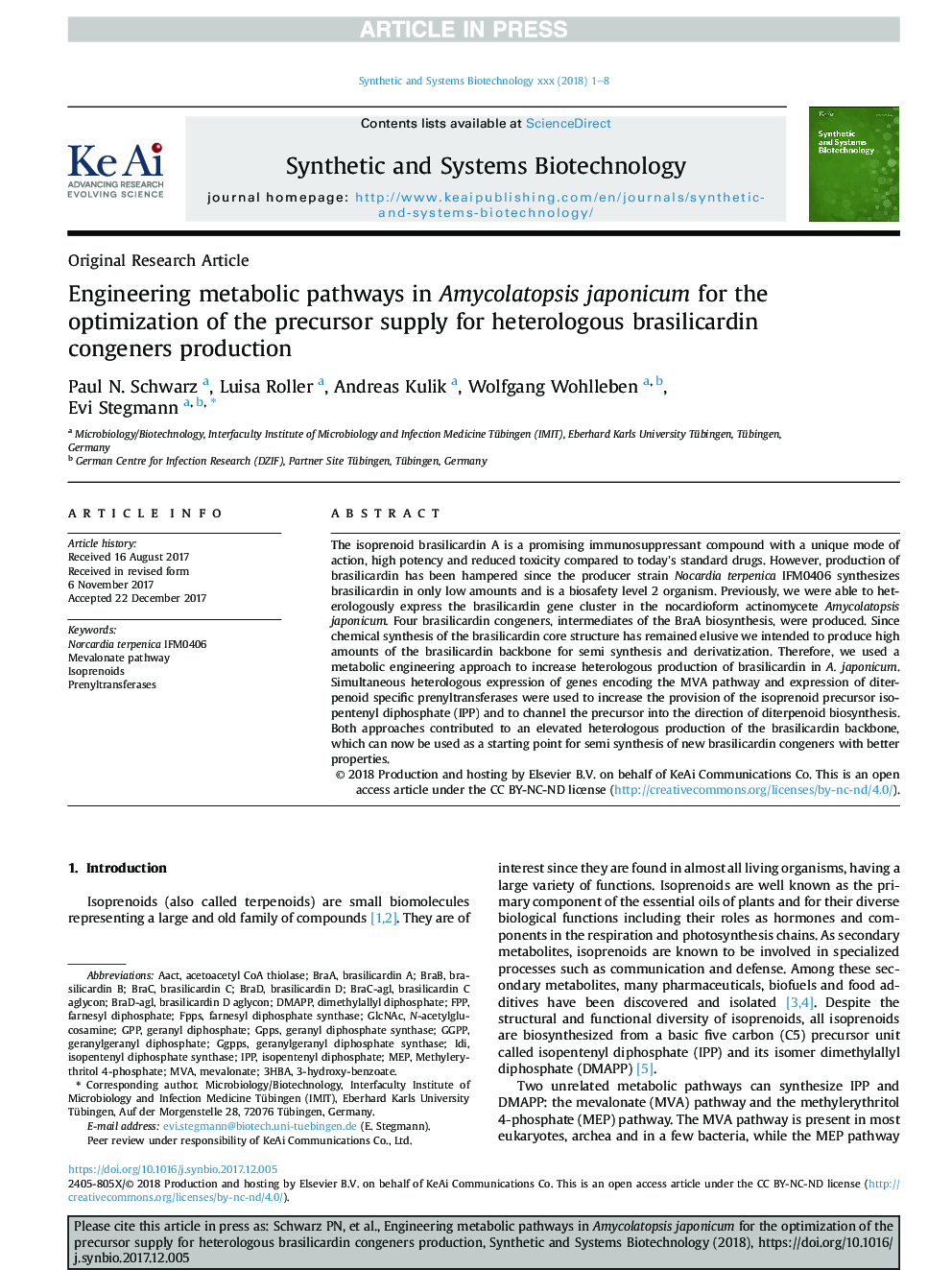| Article ID | Journal | Published Year | Pages | File Type |
|---|---|---|---|---|
| 8425938 | Synthetic and Systems Biotechnology | 2018 | 8 Pages |
Abstract
The isoprenoid brasilicardin A is a promising immunosuppressant compound with a unique mode of action, high potency and reduced toxicity compared to today's standard drugs. However, production of brasilicardin has been hampered since the producer strain Nocardia terpenica IFM0406 synthesizes brasilicardin in only low amounts and is a biosafety level 2 organism. Previously, we were able to heterologously express the brasilicardin gene cluster in the nocardioform actinomycete Amycolatopsis japonicum. Four brasilicardin congeners, intermediates of the BraA biosynthesis, were produced. Since chemical synthesis of the brasilicardin core structure has remained elusive we intended to produce high amounts of the brasilicardin backbone for semi synthesis and derivatization. Therefore, we used a metabolic engineering approach to increase heterologous production of brasilicardin in A. japonicum. Simultaneous heterologous expression of genes encoding the MVA pathway and expression of diterpenoid specific prenyltransferases were used to increase the provision of the isoprenoid precursor isopentenyl diphosphate (IPP) and to channel the precursor into the direction of diterpenoid biosynthesis. Both approaches contributed to an elevated heterologous production of the brasilicardin backbone, which can now be used as a starting point for semi synthesis of new brasilicardin congeners with better properties.
Keywords
FPPSGGPPFPPIPPAACTMEPIDIGPPDMAPPBrACPrenyltransferasesGlcNAcGGPPSMevalonateGPPSIsoprenoidsisopentenyl diphosphatedimethylallyl diphosphatefarnesyl diphosphatefarnesyl diphosphate synthaseMVAmethylerythritol 4-phosphateMevalonate pathwayN-acetylglucosamineGeranyl diphosphategeranyl diphosphate synthaseGeranylgeranyl diphosphate synthasegeranylgeranyl diphosphate
Related Topics
Life Sciences
Biochemistry, Genetics and Molecular Biology
Biotechnology
Authors
Paul N. Schwarz, Luisa Roller, Andreas Kulik, Wolfgang Wohlleben, Evi Stegmann,
